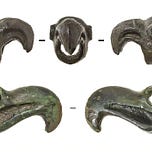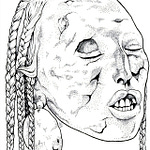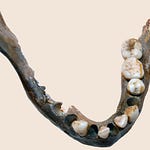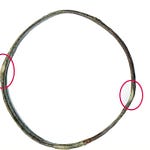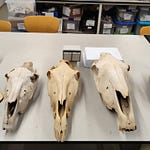Bones, bronze, and beginnings
When archaeologists began to uncover the frozen remains of Tunnug 1—a vast burial mound lying deep in the marshlands of southern Siberia—they expected echoes of the familiar Scythian world: golden deer plaques, fierce griffins, and warriors armed for eternity. What they found instead was something quieter and far older—a handful of carved bones and bronzes etched with animals that seemed to emerge from the very soil that buried them.
In a recent study published in Antiquity,1 Timur Sadykov, Gino Caspari, and their colleagues argue that these simple objects may represent the birth of the famous Scythian “animal style”—the artistic language that, for centuries, stretched across the Eurasian steppe from the Black Sea to Mongolia. Their findings suggest that the earliest versions of this art were not luxurious ornaments of empire but functional gear: horse fittings, dagger handles, and ritual implements that bound together people, animals, and the landscape they roamed.
“The earliest Scythian artisans weren’t goldsmiths crafting for elites,” observes Dr. Anya Rudneva, an art historian at the Russian Academy of Sciences. “They were pastoral metalworkers translating the language of the hunt into the grammar of bronze and bone.”
Listen to this episode with a 7-day free trial
Subscribe to Anthropology.net to listen to this post and get 7 days of free access to the full post archives.

